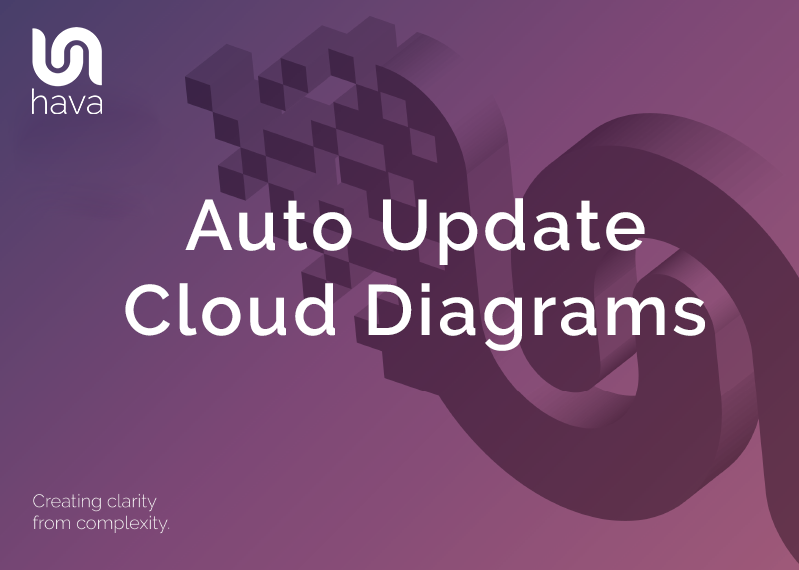When you want to map out your AWS cloud architecture you might go searching for things like AWS topology map, AWS architecture diagram, or AWS cloud map.
While AWS topology map and architecture diagram suggests you are looking for the type of diagram Hava will auto generate for you to show you all your running AWS resources, AWS Cloud Map is a very different thing which can get easily confused as a diagramming tool.
What are the differences between AWS Cloud Map and Hava cloud architecture mapping?
AWS Cloud Map: Simplifying Service Discovery in the Cloud
AWS Cloud Map is a fully managed service that simplifies the process of service discovery within your cloud infrastructure. Whether you’re dealing with microservices, containers, or other dynamic resources, AWS Cloud Map provides an elegant solution for locating and managing these services.
What Is AWS Cloud Map?
At its core, AWS Cloud Map allows you to create and maintain a map of backend services and resources that your applications depend on. Let’s break down its key features:
-
Namespaces: You start by creating a namespace, which acts as a friendly identifier for your resources. Think of it as a label that helps you organize and locate services. A namespace can represent an entire application or a specific set of related services.
-
Services: Within a namespace, you define services. Each service corresponds to a type of resource (e.g., web servers, database servers, APIs). Services act as templates, providing the necessary information for locating endpoints associated with those resources.
-
Resource Registration: When your application adds a new resource (such as spinning up a new container or launching an EC2 instance), it registers that resource with AWS Cloud Map. This registration includes details on how to locate the resource, whether through DNS queries or API calls.
-
Dynamic Updates: As resources come and go (due to scaling, updates, or failures), AWS Cloud Map dynamically updates its map. This ensures that your application always has an accurate view of available services.
How Does AWS Cloud Map Work?
-
Namespace Creation: You create a namespace, specifying the name you want to use for locating resources. Additionally, you choose the method of resource location:
- DNS Queries in a VPC: If you prefer DNS-based discovery within a Virtual Private Cloud (VPC).
- Public DNS Queries: For resources accessible over the internet.
- AWS Cloud Map DiscoverInstances API Calls: For programmatic discovery.
-
Service Definition: For each resource type (e.g., web servers, databases), you create a service. This service template includes information about the DNS records to use for locating instances. You can also configure health checks to ensure only healthy instances are returned.
-
Resource Registration: When a new resource comes online, your application calls the RegisterInstance API. This creates a service instance, containing details on how to locate the resource.
-
Service Discovery: When your application needs to connect to a resource, it calls the DiscoverInstances API, specifying the namespace and service. AWS Cloud Map returns information on how to locate one or more healthy instances.
Use Cases for AWS Cloud Map
-
Microservices Architecture: In a microservices environment, services come and go dynamically. AWS Cloud Map ensures that each microservice registers itself and provides an up-to-date view of available services.
-
Container Orchestration: When using Amazon ECS or Amazon EKS, AWS Cloud Map integrates seamlessly. As containers spin up or down, they automatically register and deregister with the service map.
-
Multi-Region Deployments: For applications deployed across multiple regions, AWS Cloud Map simplifies cross-region service discovery.
-
Custom DNS Names: You can define custom DNS names for your services, making them easier to remember and reference.
-
Filtering with Attributes: Specify attribute values for service instances (e.g., deployment stage, environment). Clients can use these attributes to filter resources.
-
Hybrid Architectures: AWS Cloud Map works not only with AWS resources but also with on-premises resources, providing a unified service discovery experience.
AWS Cloud Map is a powerful tool for managing service discovery in dynamic cloud environments. By creating a clear map of your backend services, you simplify resource location and enhance the reliability of your applications. Whether you’re building microservices, deploying containers, or orchestrating complex architectures, AWS Cloud Map is a valuable addition to your toolkit.




